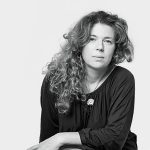Course on colour theory. The aim of the course is to provide students with the theoretical and practical knowledge necessary to express themselves in illustration through colour.
Colour influences us emotionally, psychologically and also physically.
Colour is capable of conveying harmony or tension within a scene, bringing attention to a significant detail, depicting character traits of a character, showing changes or defining the time frames of a story.
During the course we will analyse the colour choices of the great masters of the history of art and contemporary illustration; we will learn how to achieve colours with blends; we will analyse colour contrasts and learn how to achieve the right palette balance; finally, we will discover our personal colour preferences.
The course is aimed at those who would like to deepen their knowledge in the field of colour, experimenting with new and unusual combinations, inventing colour palettes capable of communicating emotions.
Each participant will be personally supervised by the teacher.
Minors from 11 years of age can also participate in the course.
Programme
Colour in picture books: analysis of original albums and plates.
Colour theory: the meaning and language of colour.
Communicating with colour: psychology and symbolism of colours.
Seeing and perceiving colours: how to overcome our preconceptions.
The constancy of colour.
Perceiving tonal values: the chiaroscuro in colour.
Colour models.
Identifying a colour, colour source, brightness, saturation.
Subjective colour: understanding one’s colour preferences.
The main colour contrasts.
Chromatic harmony and dissonance.
Colour reproduction: print, video, web.
How to create atmospheres with colour and lighting.
Important note
The recommended technique for the course (and used by the lecturer during practical demonstrations) is acrylic, but students can also work with other painting techniques.
Skills acquired in the course
Notions of psychology and colour symbolism.
Knowing how to identify colour contrasts and how to choose the most suitable one.
Knowing how to design the colour palette of an illustration.
Creating colour: how to obtain colours with mixtures.
Know how to develop an illustration with the right balance of colours.
Types of final tests
Produce a mini-series of illustrated colour plates for a story.
Illustration by Sarolta Szulyovszky





